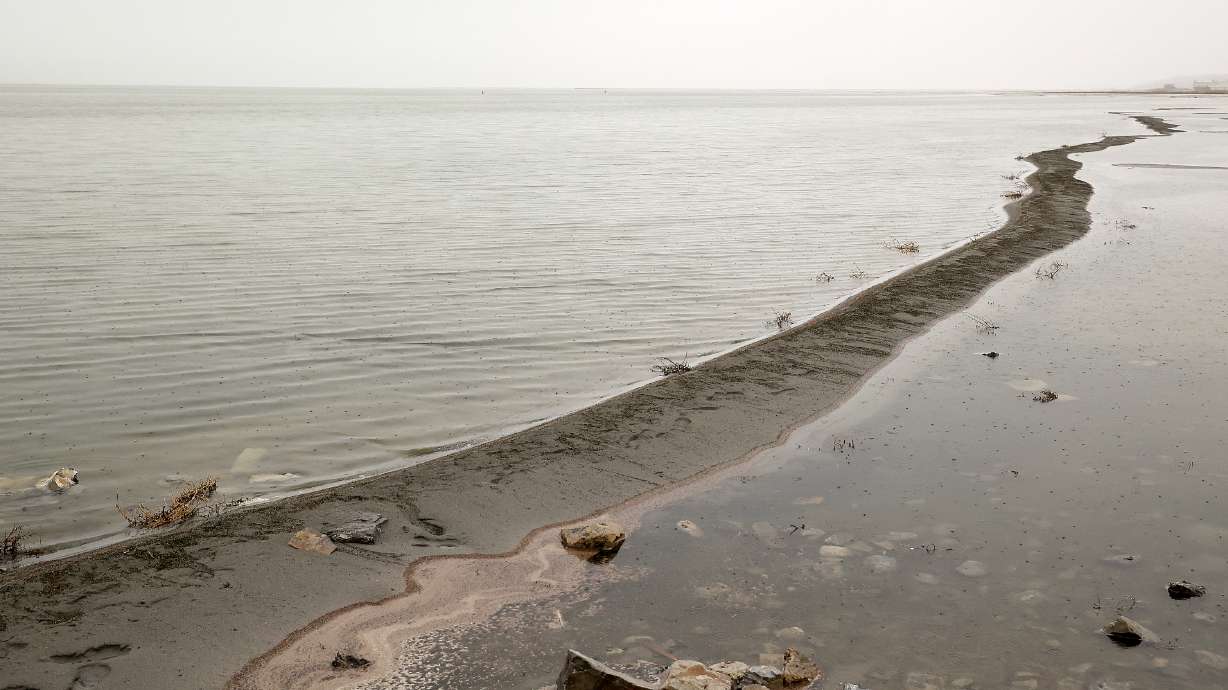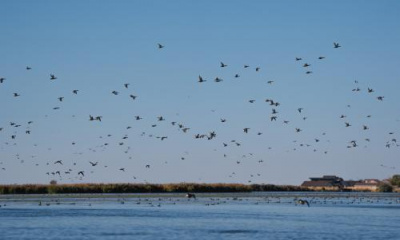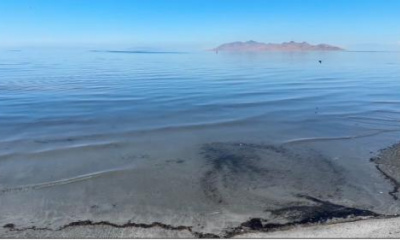SALT LAKE CITY — The Great Salt Lake received a significant boost from last year's record snowpack and an above-normal water year overall after it had fallen to a record low the year before, threatening the future of the lake.
While Utah may never top last winter, this year's snowpack is now back above normal after a pair of intense storms this month. Controlled releases began at Utah Lake last week to avoid flood risks, and that's expected to provide about 30,000 acre-feet of water to the Great Salt Lake. Additional controlled releases within the lake's basin are expected in the coming months as this year's snow collection season shakes out.
But the state may soon have a plan to get more water to the lake during prolific water years. Members of the Senate Natural Resources, Agriculture and Environment Committee voted unanimously Tuesday to advance SB196, a bill that would direct the Great Salt Lake Commissioner's Office to create a plan to address how more water can be sent to the Great Salt Lake during wet water years.
Sen. Nate Blouin, D-Salt Lake City, the bill's sponsor, explained that the bill was created with conversations with agricultural groups, conservation organizations and others with a vested interest in water. It wouldn't grant the commissioner any new powers, but it would provide the state with a plan for how to send water to the lake when there's enough to do so at the end of an irrigation season.
"The bill does not create any new authorities for the commissioner; it doesn't spend any money. We're just trying to ensure that when we have a really good water year like we did last year ... we have a coordinated plan with broad stakeholder buy-in on how we're going to maximize the current conditions for the benefit of the Great Salt Lake," he explained. "We've got to be more proactive in the future."
Tim Davis, Great Salt Lake deputy commissioner, said the measure is something that the office recommended in a strategic plan it released last month. He told the committee that wet water years are likely going to be when the state will have its best opportunity to get water to the struggling lake, which remains nearly 5 to 8 feet below its minimum healthy levels at the moment, without burdening water users.
He added that the plan would not be regulatory and the commissioner's office would work "in conjunction" with water districts, irrigators and municipalities to find "efficiencies" during wet years to find ways to send additional water to the Great Salt Lake.
Members of the committee did bring up some questions and concerns they had with the bill, however. Most of those centered around water rights and the definition of a "wet" water year. Davis clarified that it wouldn't take away from water rights holders and only an "abundance" of water would go toward the lake. The office wouldn't have the authority to direct water to the lake, either.
"It's a collaborative plan to get people moving in the same direction," he said.
He later noted that the commissioner's office would move forward with a plan regardless of a bill, but the bill would help set up perimeters for the plan and a requirement for the office to report progress back to the Legislature.
Blouin said he was also willing to amend the bill's language to include a more specific definition of a wet water year. As is, the bill defines a wet water year as a year where "hydrologic and meteorological conditions with precipitation or runoff resulting in or reasonably expected to lead to substantially higher than normal water levels in rivers, reservoir or soil moisture in the Great Salt Lake basin at the end of a water year."
Utah's water years run between Oct. 1 to Sept. 30 of the following year, annually. The Great Salt Lake basin's average median snowpack peak is about 19.6 inches of snow water equivalent, according to the Natural Resources Conservation Service. That figure doesn't include other factors like summer rain, soil moisture levels or reservoir storage conditions.
Sen. Scott Sandall, R-Tremonton, added that he would like more quantification to the amount of water directed to the lake during wet years. Those are changes that could be amended in the bill as it goes through the legislative process.
All bills must be approved by the Utah House of Representatives and Senate by March 1 before going to Gov. Spencer Cox's desk for final approval. If enacted, the commissioner's office would be required to have its plan ready by Oct. 1, 2025, the start of the 2026 water year.








